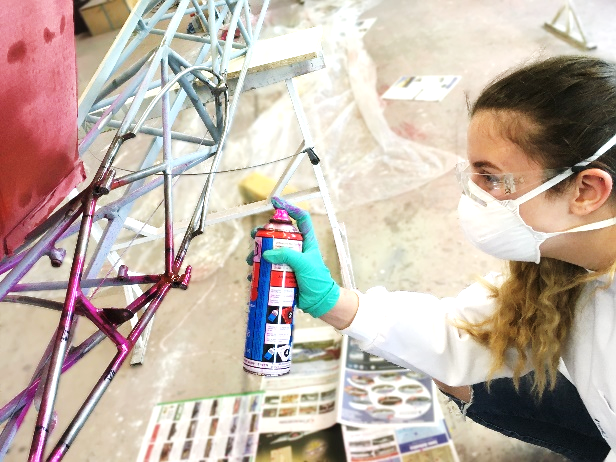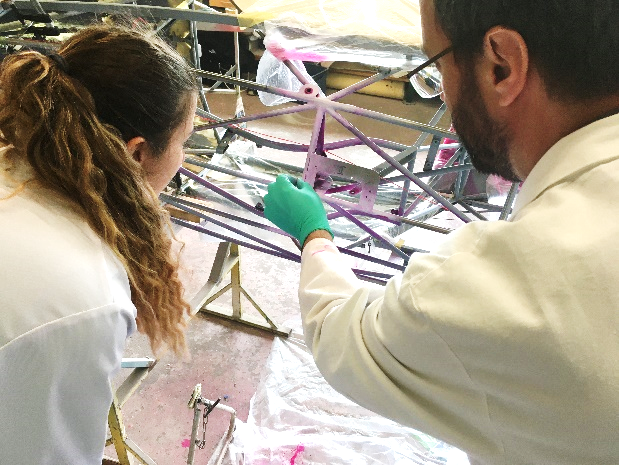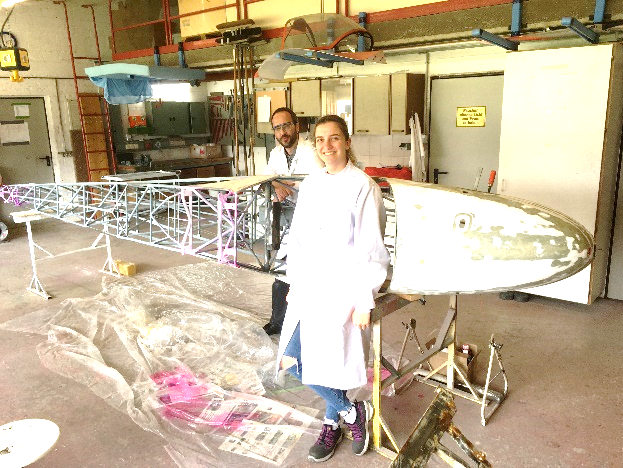Apprenticeship at the Fraunhofer IWM - Crack testing put into practice

Dye penetrant inspection to make potential cracks visible is taught as one of many training contents as part of the materials tester training. In most cases, the exercises take place during training on components where the crack is already visible and easily accessible. Our trainee Anna Sciarillo was able to gain some practical experience: Dye penetrant inspection on a glider fuselage made of tubular steel frame. The welds to be inspected on the complex structure with many nodes are not particularly easy to access and cracks (if present) are not always directly visible. In addition, the existing paint on the pipes must be removed before testing in the area of the welds - paint residues in the areas to be examined cannot be ruled out.

In the run-up, Anna's instructor Lutz Reißig had taken a look at the construction and defined the highly stressed junctions. These were cleared of paint so that Anna could carry out the crack test at these points.
Under the supervision of her instructor, who had marked the 12 locations in question, Anna began work: the welds were cleaned and any grease residue removed, then the highly viscous red paint was applied to penetrate potential cracks and make them visible later. After half an hour, the excess paint was wiped off and the welds were sprayed with a developer designed to draw the paint out of the potential cracks and make them visible.

Once this time-consuming work was completed, with a variety of factors to consider, the next step was to interpret the indications. The individual areas examined were closely scrutinized: Every blob of red color made visible by the developer that seemed dubious to them was closely eyed and visually re-examined. In the end, all indications could be traced back to small welding defects, such as harmless pores, or paint residues - no cracks were found: Good for the glider pilots, who can now paint and cover the steel frame construction of the single-seated old-timer with peace of mind.
This was a great exercise for Anna, who was able to apply what she had learned in her training course to a real component. She received a number of valuable practical tips from Lutz for crack detection on such complex components under non-laboratory conditions, and was able to gain valuable experience!
Back to Assessment of Materials and Lifetime Concepts Highlights
 Fraunhofer Institute for Mechanics of Materials IWM
Fraunhofer Institute for Mechanics of Materials IWM